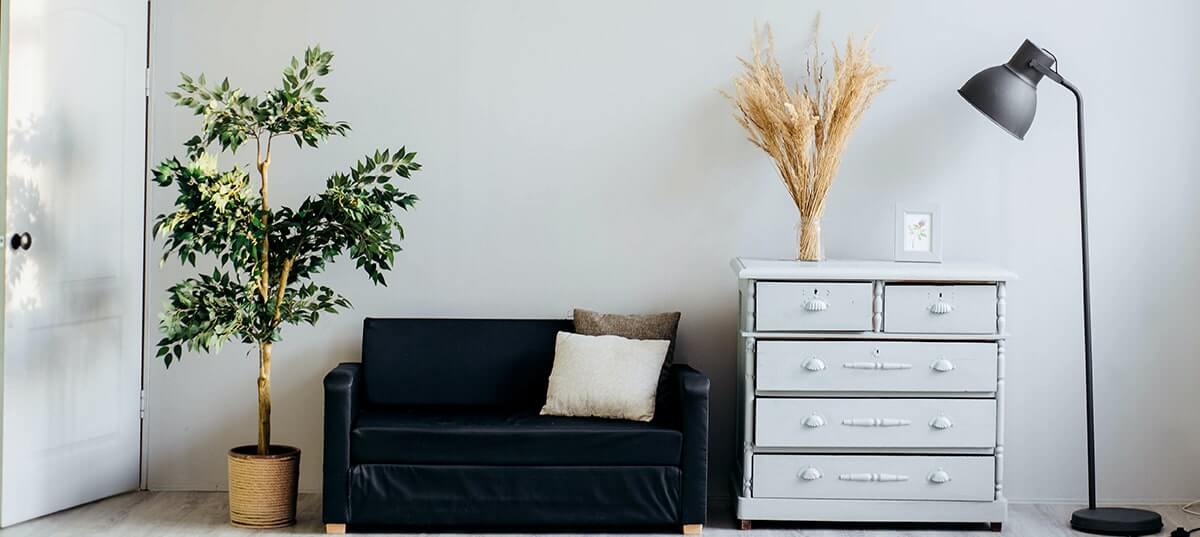Growing Trees Indoors
 November 2021
November 2021
Yes, you can grow a tree in your apartment. No, you can’t just treat it like a big plant. An indoor tree serves the same function in a room as a piece of furniture. It serves as a focal point and sets a mood in a room. Choosing one means paying attention to both design and horticulture. In this blog, we’ll cover how to pick the right indoor tree and care for it.
How to pick the right indoor tree
You not only want to select a tree that fits your room décor, but also one that will flourish in your space. Here are three tree options to consider.
- Citrus trees bring a pop of color to any room. These trees are ideal for growing indoors and thrive in full sunlight.
- Ficus trees come in a variety of textures and heights. They are ideal for spaces with a good amount of indirect light. A ficus tree will thrive in a room with a large picture window, skylight, or south-facing window. If your space is dark or drafty, this tree may not do so well.
- Dragon trees have sword-like leaves and are ideal starter plants for indoor spaces. These types of trees are more adaptable and don’t need a lot of light.
How to care for your indoor tree
Indoor trees typically have low water needs. A common mistake when taking care of an indoor tree is overwatering. One way to tell if you’re overwatering or underwatering is to look at the tree’s leaves. If the leaves appear green but are fragile and break easily, it usually means you’re overwatering. Alternatively, if the leaves are curling and turning brown, you may be underwatering your tree.
Humidity can also play a significant role in your tree’s health. In winter, your apartment can be dry, which can lead your plants to dry out quickly. Consider grouping your plants or placing your tree near a humidifier and spraying it with water regularly.
Unless you have a citrus tree, most indoor trees do very well in indirect or medium light conditions. Try not to grow your tree in direct sunlight because it will burn or scalp the plant. Also, beware that the light in your home may change depending on the time of the year. You may need to move your tree as the season change.
Check your type of tree to confirm its feeding needs. A rule of thumb is to fertilize your trees once a month when they’re actively growing during the spring and summer. Ficus trees typically don’t need fertilizing in the winter. However, citrus trees can benefit from feeding throughout the entire year.
Over time you may need to prune or move your tree to a larger pot. Pruning is important for keeping the tree’s overall shape. As your tree grows, the roots will get larger and may outgrow their container. One tip is to replant the tree in a larger pot. Another option is to keep the container and trim the plant’s root ball, removing excess roots.
By following these tips, you’ll get not only the look you want, but the right tree that will thrive in your space.
